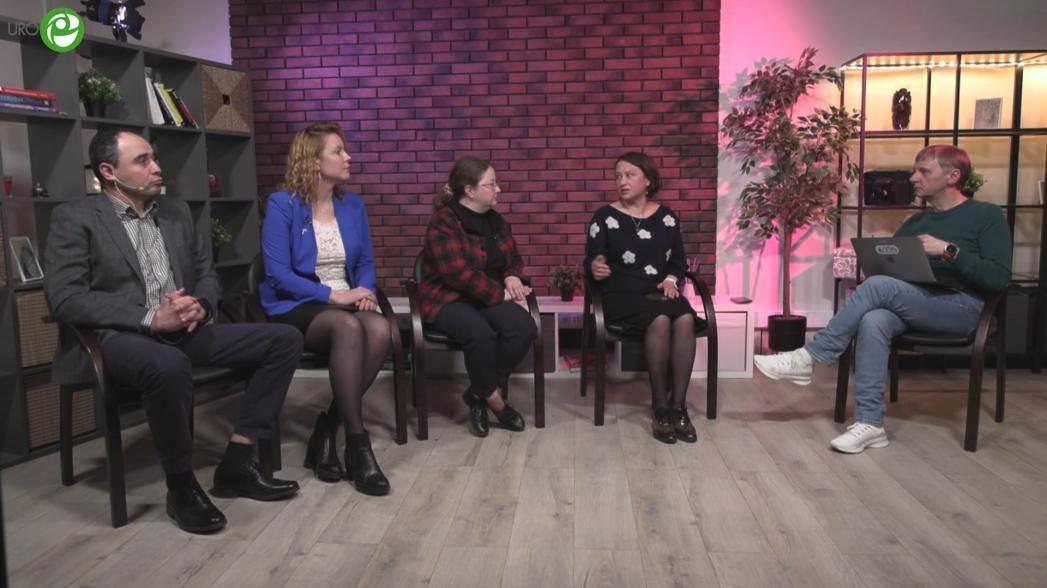In modern medicine, an interdisciplinary approach is of particular importance. The management of many patients requires the simultaneous participation of specialists from different profiles. At the same time, doctors are in dire need of digital tools for effective communication — often they are forced to meet in person or talk on the phone. This was discussed during a recent conference of the “White spots and gray areas of urology” on the Uro.TV channel.

The topic of the new meeting was designated Igor Shaderkin, moderator, head of the e-health laboratory of the Institute of Digital Medicine of Sechenov University, Ph.D., as “Universal soldier: clinician and diagnostician”. According to him, today no one is surprised that clinicians themselves look at images of ultrasound, CT, MRI, and not just read the conclusions of their colleagues who deal exclusively with the corresponding type of diagnostics. But does the clinician need to have a deep knowledge of pathomorphology, cytology?
According to Marina Sonova, Head of the Department of Obstetrics and Gynecology of the Ilyinsky Hospital, MD, the clinician must be able to independently interpret the results of histology and be in touch with the pathomorphologist of the clinic in which it works.
Nikolay Keshishev, urologist, oncologist, Joint Hospital with Polyclinic Office of the President, Ph.D., is convinced that the biopsy — this is a separate, very interesting area, into which the clinician “is quite difficult to penetrate”.
“But we are constantly in contact with pathologists, — added Nikolai Keshishev. — For example, if a biopsy is performed, then we, as a rule, call the pathologist and discuss the results, ask clarifying questions to each other. But, unfortunately, we don’t look at the glasses themselves yet”.
The fact that pathomorphologists work closely with clinicians was also confirmed by Marta Kovylina, head of the uromorphological laboratory of the Department of Urology of the Moscow State Medical University, Candidate of Medical Sciences
“We often discuss patients with their doctor, — said Marta Kovylina. — Sometimes I really want to “interfere” to treatment, to suggest something to a colleague, to direct his train of thought”.
The interaction of clinicians and pathologists, starting from the stage of sending the material, plays a huge role in the context of improving the quality of diagnosis and treatment, the expert noted.
“It is very important that we get the maximum clinical information from the doctors who operated, did the biopsy, — commented Marta Kovylina. — If the clinician provided it in full, with all the necessary clarifications and details, this makes it easier for us to draw up a conclusion. On the contrary, the lack of necessary data makes diagnosis difficult. Then the pathoanatomical conclusion turns out to be superficial.
Mistakes and “gaps” in the direction of the study may lead to a delay in the issuance of results, emphasized & nbsp; S.I. Spasokukotsky.

So how often do clinicians and diagnosticians interact and what tools do they use to do this, Igor Shaderkin asked.
It turned out that such an exchange of opinions takes place on a daily basis, but often doctors either get together in the same office, or call each other on the phone in the old fashioned way.
“We communicate with doctors every day, because the amount of material is large, — Elena Prilepskaya stated. — Since referrals are often written by residents and graduate students, the attending physician often comes to the pathologist and additionally reports some information about the patient that is not reflected in the form. He can also come after he receives a conclusion to clarify some points or even to look through the microscope together”.
“Our laboratory is located on the same floor as the urology department, — continued Marta Kovylina. — So we can talk face to face with clinicians”.
The participants in the discussion agreed that many urologists and gynecologists today are well versed in ultrasound diagnostics. But to comprehend the intricacies of the rest of the “adjacent” medical specialties — the task is not an easy one. As Kozma Prutkov said, it is impossible to grasp the immensity.

With the development of targeted therapy, personalized medicine, pathomorphology and genetics will come to the forefront. Therefore, the need for operational communication within interdisciplinary ciplinary team will grow. To satisfy it, doctors will need new high-quality digital tools.
From EverCare.ru







